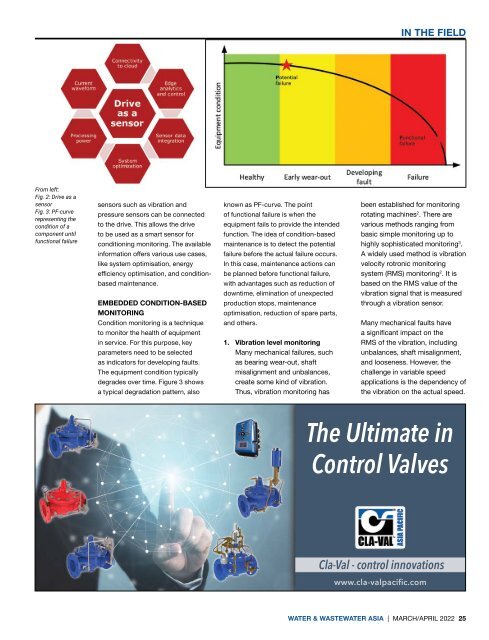Water & Wastewater Asia March/April 2022
Water & Wastewater Asia is an expert source of industry information, cementing its position as an indispensable tool for trade professionals in the water and wastewater industry. As the most reliable publication in the region, industry experts turn this premium journal for credible journalism and exclusive insight provided by fellow industry professionals. Water & Wastewater Asia incorporates the official newsletter of the Singapore Water Association (SWA).
Water & Wastewater Asia is an expert source of industry information, cementing its position as an indispensable tool for trade professionals in the water and wastewater industry. As the most reliable publication in the region, industry experts turn this premium journal for credible journalism and exclusive insight provided by fellow industry professionals. Water & Wastewater Asia incorporates the official newsletter of the Singapore Water Association (SWA).
Create successful ePaper yourself
Turn your PDF publications into a flip-book with our unique Google optimized e-Paper software.
IN THE FIELD<br />
From left:<br />
Fig. 2: Drive as a<br />
sensor<br />
Fig. 3: PF-curve<br />
representing the<br />
condition of a<br />
component until<br />
functional failure<br />
sensors such as vibration and<br />
pressure sensors can be connected<br />
to the drive. This allows the drive<br />
to be used as a smart sensor for<br />
conditioning monitoring. The available<br />
information offers various use cases,<br />
like system optimisation, energy<br />
efficiency optimisation, and conditionbased<br />
maintenance.<br />
EMBEDDED CONDITION-BASED<br />
MONITORING<br />
Condition monitoring is a technique<br />
to monitor the health of equipment<br />
in service. For this purpose, key<br />
parameters need to be selected<br />
as indicators for developing faults.<br />
The equipment condition typically<br />
degrades over time. Figure 3 shows<br />
a typical degradation pattern, also<br />
known as PF-curve. The point<br />
of functional failure is when the<br />
equipment fails to provide the intended<br />
function. The idea of condition-based<br />
maintenance is to detect the potential<br />
failure before the actual failure occurs.<br />
In this case, maintenance actions can<br />
be planned before functional failure,<br />
with advantages such as reduction of<br />
downtime, elimination of unexpected<br />
production stops, maintenance<br />
optimisation, reduction of spare parts,<br />
and others.<br />
1. Vibration level monitoring<br />
Many mechanical failures, such<br />
as bearing wear-out, shaft<br />
misalignment and unbalances,<br />
create some kind of vibration.<br />
Thus, vibration monitoring has<br />
been established for monitoring<br />
rotating machines 2 . There are<br />
various methods ranging from<br />
basic simple monitoring up to<br />
highly sophisticated monitoring 3 .<br />
A widely used method is vibration<br />
velocity rotronic monitoring<br />
system (RMS) monitoring 2 . It is<br />
based on the RMS value of the<br />
vibration signal that is measured<br />
through a vibration sensor.<br />
Many mechanical faults have<br />
a significant impact on the<br />
RMS of the vibration, including<br />
unbalances, shaft misalignment,<br />
and looseness. However, the<br />
challenge in variable speed<br />
applications is the dependency of<br />
the vibration on the actual speed.<br />
The Ultimate in<br />
Control Valves<br />
Cla-Val - control innovations<br />
www.cla-valpacific.com<br />
WATER & WASTEWATER ASIA | MARCH/APRIL <strong>2022</strong> 25


















